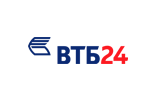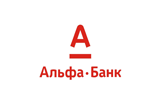
There is a stereotype that distance learning is not as effective as conventional communication with a teacher in real life. However, such a way has its advantages. First of all, classes with a native speaker by Skype are probably going to cost you less than offline ones. Secondly, with Skype lessons you study from the comfort of your own home. These are some of the reasons why people choose to study online.

How to explain Russian phonetics and pronunciation over online lessons?
There are five basic phonetic problems encountered by people learning a foreign language:
1) There are some sounds which cannot be found in their native language (English ‘th’ in Russian, or Russian ‘ж’ or ‘ы’ in English).
2) Letters which look the same in different languages but have different pronunciation. For example, Russian letters ‘У’ and ‘P’ sound completely different in English. It is quite confusing for learners and sometime makes it difficult to figure out how some words should be pronounced.
3) Letters can represent different sounds which have different symbols, and as a result they get mixed up. For example, in Russian the only possible pronunciation for the “C” symbol is [c], like the first letter in «Соль» (salt), whereas in English “C” can sound like “S” or “K”.
4) In a new language there might be some very unusual sound combinations which are hard to pronounce at first. For example, Iranians find it hard to say “сп” (“sp”) at the beginning of the word, so they add an extra vowel sound “и” (“i”).
5) Sound transformations and reductions. For example, we write “вода” (“voda”, water) but say [вада] (“vada”), or здравствуйте (“zdravstvuyte”, hello) – [здраствуйте] (“zdrastvuyte”).

Ways to solve phonetic tasks online
To solve these issues, we will proceed with a from simple to complex approach, and we will start from the end of the list.
To start with, let’s solve the problem no. 5.
Is it necessary to explain to your students how letters in the Russian language transform into sounds when pronounced? After five years of working as a Russian teacher, I came to the conclusion that it really isn’t. If I do explain, I will probably just tell that in a real life Russian speech words might sound a bit different from the way they are written. When students just learn the rules, such as “o” is pronounced like “a” in unstressed syllables, they forget them quite quickly and begin to always pronounce “o” like “a”, i.e. they learn not the rule, but the mistake.
Moving on to no. 4.
How can we help students to pronounce complex words with untypical sound-letter combinations?
Working online it’s very easy to show different ways to pronounce difficult words by dividing words into short syllables or into 2-3-4 parts. For example, пожалуйста (please, you are welcome) [по - жа - лу: - ста] (po - zha - lu: - sta) or [пожа – луи - ста] (pozha - lui - sta). Here you can explain that sounds which are hard to hear are just omitted and not pronounced. When your students get quite good at such syllable pronunciation, they can start saying words faster.
Problems no. 2 and 3 are quite similar.
The second problem occurs when a person is used to reading a symbol in one way, and now he or she needs to learn to associate it with a different sound. Naturally, it will take time. All people cope with such a complex cognitive circuit in different ways, it depends on their personal features, brain plasticity and their current state (whether the student has had enough sleep, or maybe he or she is tired, happy, upset, etc.). Let me give you an example: if in a student's native language the letter “Y” is read as “I”, it means that the native speaker of this language will most likely read the word “зуб” (tooth) as [zib]. Often, starting to read in Russian, learners translate into their native language not only words, but new symbols as well.
This is the reason why with beginners Latin transcription of new and problematic words works best. For sure, a lot of teaching materials do not recommend it; however, this trick works. The only thing we must pay attention to is the way students read combinations of Latin letters, because there can be some differences. For example, some learners will read «j» like «дж», whereas others will read it like «й». That’s something you as a teacher have to adapt to.
At the same time, when working with visual representations of letters and sounds (for example, “Ь”, “Б”; “Ж”, “Ш” ...), the teacher has to understand if these sounds are interchangeable in the student's native language. (For example, Latin “B” and “V” are pronounced in the same way in Spanish; French-speaking students often do not distinguish between “Р” and “Х”; “Ч” and “Щ”). And a teacher should also remember if the student has had problems with these sounds before. For example, I once had a situation when a student did not distinguish between “С” and “Ш” in Russian, and later I learnt that in his native language (German) he also confuses these sounds. It might look like this is a special case, but during daily work the frequency of such problems is formed into the system. Even advanced learners might still have such problems and it causes certain discomfort for the student.
It is going to take some time to differentiate between symbols and sounds in a new language, and to create correct association “symbol” (grapheme) - “sound”. This requires a lot of involvement and attention from the teacher and pre-prepared audio tracks for the students so they can continue working after the lesson. The best way to do it is to work on one part of the track during the class and leave the second part as a home task.
It goes like this, the student listens to his/her teacher and puts a letter into the gap, just one to start with:
«О»
__Н, Д__М, Т__М, К__М, К__Т, СТ__Л, С__М, К__ФЕ, КИН__, ВИН__, МЕТР__, К__МНАТА, К__ШКА, СТЕКЛ__, ОКН__, КОЛЕС__
«У»
__М, Т__Т, З__Б, СЛ__Х, М__КА, Р__КА, Т__ЧА, СТ__Л, Ш__БА, Б__ТИК, __МНЫЙ, __ХО, Т__МАН, Т__НДРА, Т__СКЛЫЙ
Then we make the task more complicated; now the student has to choose one letter/sound out of two:
“О” or “У”:
К__Т, __ХО, Т__К, К__СТ, К__СТЬ, СТ__Л, СТ__Л, Д__ЛГ, Д__Б, Б__ТЫЛКА, Т__ЧКА, Т__ЧА, __ТР__
At this stage it is particularly important for the sound to be absolutely clear, because the aim of the task is not to check a new skill but to develop audio and visual perception of the sound.
It’s important to remember a few basic principles of working with sounds:
- 1 lesson - 1 new sound or differentiation between a pair of sounds;
- One word - one problematic letter;
- Teacher’s diction is the standard, so don’t rush and articulate your speech as clearly as possible
Introducing students to new symbols and sounds.
Ηere is the last and the most difficult part, it was mentioned as no.1 on the list above. In order to do it you have to explain and show lip and tongue positions (using your mouth, hands and illustrations), and their mechanics. Simply put, introducing a new sound you have to show where in the mouth the articulation occurs: a throat, back of the tongue, lips or tremor of the tip of the tongue (can be a problem for students speaking Japanese, Korean, Chinese or French).
There are some exercises you can show to your students o help them feel the areas where the sounds are produced and work on the development of these specific zones.
One of the exercised which can help to master the sounds “Б” и “П” (for example, it’s useful for Korean speaking student since there is no clear difference between these sounds in their language, and the same with the sounds «В» и «Ф»)
- Pursing your lips together (start with 5 counts): purse your lips together, hold and count to 5, then release. Repeat for 5-10 times.
- "Fence": while holding your teeth together open your lips as wide as you can. Repeat for 5-10 times.
- “Engine”: it’s an old game for children, which allows add some tremor to the lips and feel them better. While doing it, some kind of a “vroom, vroom” sound is produced.
When you master the sound «П», the first two exercises remain the same, but the third one will be saying «ПРу»or «ПФу» (it’s a tremor sound as well) when you breath out.
Exercises to master the “P” [r] sound:
When working on the Russian “P” sound you can use “Fence” (see above) and “Swing”: mouth is wide open, the tip of the tongue goes behind upper teeth to the alveolar ridge, and then goes down behind lower teeth .
“Swing” is followed by “Sail”: the tongue is placed near the roots of upper front teeth on the alveolar ridge, mouth is open, the position is held for 5-7 counts.
“Painter”: mouth is open, and the tongue is moving back and forth along the palate in “painting” motions like a brush. The tongue never comes off the palate and the lower jaw doesn't move.
“Little mushroom”: smile showing your teeth, open your mouth slightly, the whole surface of the tongue is pressed to the palate. Open your mouth wide so the stretched hyoid ligament will look like a leg and the tongue like a cap of a “little mushroom”.
“Harmonica”: smile showing your upper and lower teeth. Keep (“glue”) your tongue on the palate. Move your lower jaw up and down as if you are playing the harmonica.
Clacking: you throw your tongue from the upper palate to the lower one with a load click. You can change the pace.
These exercises are a great tool to help your students feel different parts of their mouth, stretch the tongue frenum, strengthen the ligaments, and improve the articulation of sounds.

Exercise to master the «Ы» sound:
Кы - гы, Кы - гы. Кы - гы. Кы – гы.
Гы - хы - кы, кы -гы – хы;.
Ык -ыг. Ык -ыг. Ык -ыг. Ык -ыг.
Ыкы – ыгы, Ыкы - ыгы, Ыкы – ыгы, Ыкы – ыгы.
Ыкы - ыгы - Ыхы; ыгы - Ыхы - ыкы ; Ыхы - ыгы – ыкы.
Ы ы ы.
Кмы гмы. Кмы гмы. Кмы гмы.
Мы мыл. Мы мыл.
Кмы гмы хмы гмы кмы хмы кмы гмы хмы, гмы кмы хмы мы мы.
Кны гны хны, гны кны хны кны гны хны, гны кны хны ны ны ны .
Кы квы гы гвы Кы квы гы гвы вы выл вы вы вы вы.
Кбы гбы кбы гбы бы был бы бы бы бы.
Ты, тыква, мы, мыло, был, вы, выход, сыр, сын, дым, слыл, рыл, ныл, дым, рык, рыба, рынок, сны, цыц, цирк, цыган, отдых, Анды, ты, коты, цветы, лыжи, белый, столы, плыть, сны, умный, чёрный, зелёный, серый, добрый.
When a student gets better at pronouncing the sons, you can ask him or her to turn off their camera and do the same with yours. The absence of visuals will make learners articulate their speech better and will not allow to “jam” difficult sounds, because now they have to try harder to be understood.
Conclusion
To sum up, teaching online is personalized work. However, mini group classes with 2-3 learners are also possible.
Working on pronunciation a teacher must understand features of the learner’s native language. Moreover, it is worth clarifying (in the context of a lesson) if there have been any problems with pronunciation of different sounds in their native and/or first foreign language.
You should keep in mind that it is exceedingly difficult to associate a new symbol with a new sound, and sometimes physiologically its articulation is tough for a learner.
It’s crucial to understand that the same symbols can be associated with different sounds. And our goal is to connect a new symbol with a familiar sound. And it is no easier than working with a new sound-symbolic series and / or sound-symbolic pair. Visuals are a powerful prop and a good tool to master your student's communication skills.
Today distance learning with its advances allows us not to just learn grammar, but prepare for exams, master various dialects of the language , go all the way from a beginner to advanced level, and you don’t even need to leave your home to do it.





























